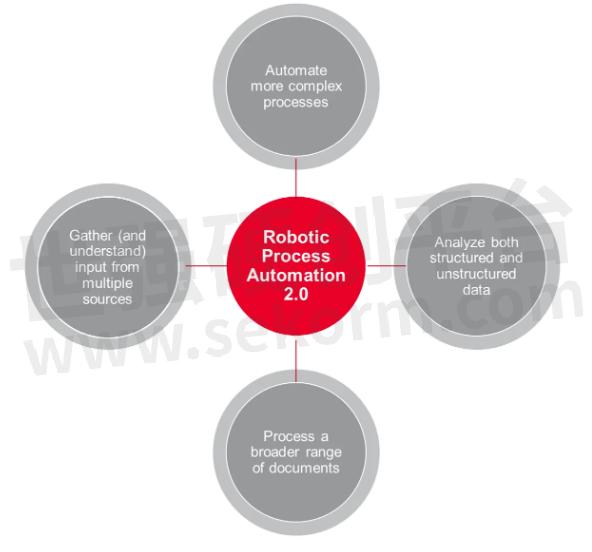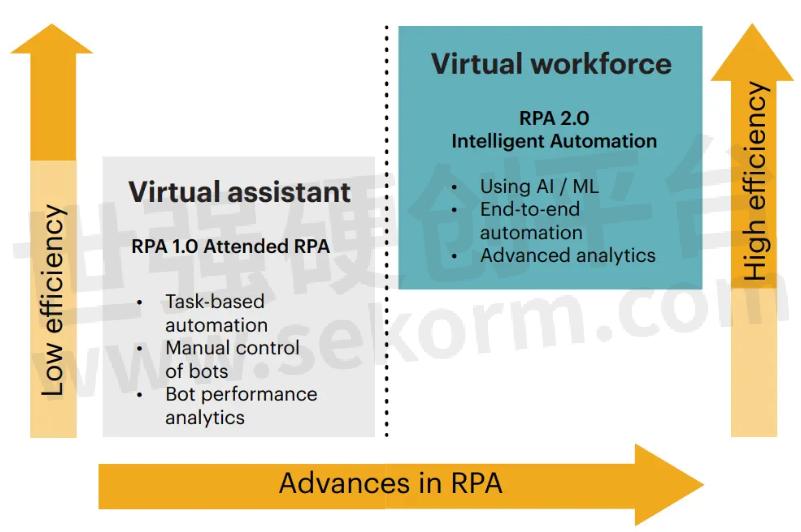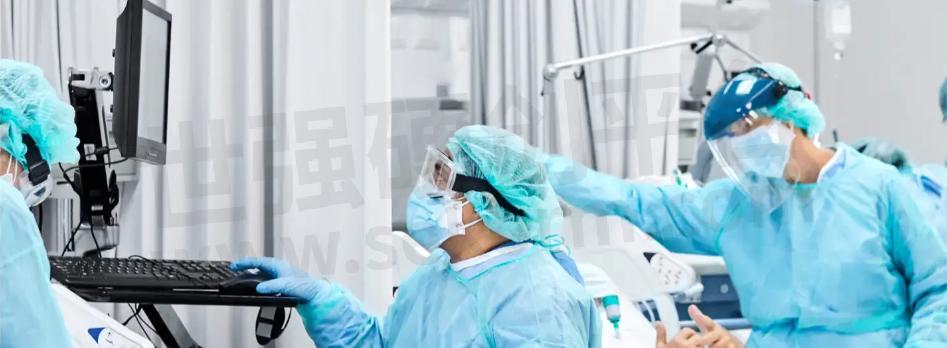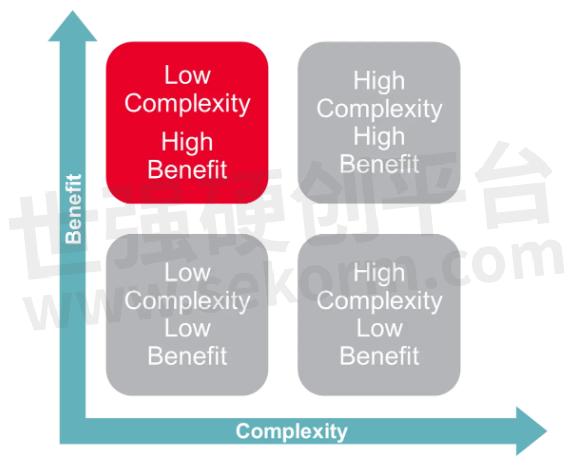Unleashing the Cure: RPA 2.0’s Impact on Healthcare and Aerospace & Defense

The healthcare, aerospace, and defense industries all face common hurdles in the present day:
a formidable scarcity of skilled workforce
the demand for maximum output with limited resources
and the need for top-notch security.
Each of these obstacles presents formidable challenges to operational efficiency, expansion, and mission success. In this blog, we will delve into the transformative power of RPA 2.0 to ignite unparalleled efficiency and serve as the ultimate antidote to tackle all these challenges head-on.
What is RPA 2.0?
RPA, or Robotic Process Automation, is a type of software technology that automates repetitive, rule-based tasks. It involves the use of software robots or bots that can mimic human actions and interact with digital systems and software applications to perform tasks such as data entry, data extraction, report generation, and more.
RPA 2.0 has further enhanced the benefits of RPA, significantly reducing the time and effort required to perform complex tasks. It involves the use of more advanced technologies like machine learning and automation intelligence.

It unlocks new abilities such as natural language processing (NLP), character and image recognition, and the ability of bots to see, think, and even improvise. You can expect these bots to:
Automate more complex cognitive or decision-making processes.
Process a broader range of documents (handwriting, email, scan, and image) by analyzing both structured and unstructured data.
Understand information on the screen with intelligent computer vision.
Gather input from multiple sources, whether it be a database or a file on that machine, System Under Test, website, mobile app, etc.
Forging a Smarter Virtual Workforce
Using RPA 2.0 to create a "digital workforce" enhances mission readiness, streamlines processes, improves efficiency, and reduces human error. RPA 2.0 can be used to automate back-office processes like record keeping, and data entry. In highly secured environments like military installations, hospitals, and senior government offices, even the highest-paid occupations have a significant amount of activity that can be automated.
For example, military organizations face unprecedented workloads as their missions become more complex. Yet, there is not a corresponding increase in resources like people, money, and time. As a result, the Air Force is currently using advanced RPA to move data between classified levels and pull data together from different systems without having to extract data from a legacy source.

RPA 2.0 in Healthcare
Healthcare organizations often face the challenge of complex API (Application Programming Interface) integrations when attempting to automate processes across different systems. However, the emergence of RPA 2.0 brings a refreshing change.
In healthcare, RPA 2.0 empowers nurses and clinicians, regardless of their technical backgrounds, with the latest AI (artificial intelligence) advancements. They can create rules and instructions, conducting tasks across multiple systems as a human would. This empowers healthcare professionals to optimize efficiency and focus more on patient care.

Other ways RPA is being deployed in the healthcare industry
Patient registration and data entry: RPA bots can extract patient information from various sources, validate it, and populate electronic health records (EHR) systems automatically. This reduces the manual effort required for data entry and minimizes the risk of errors.
Claims processing: RPA can automate the processing of insurance claims by extracting information from claim forms, validating it against predefined rules, and submitting claims electronically. This expedites the process and ensures accurate and timely reimbursement.
Appointment scheduling: RPA bots can handle appointment scheduling tasks by accessing patient calendars, checking for availability, and automatically booking appointments. This eliminates the need for manual coordination and reduces scheduling conflicts.
Data migration and integration: RPA can assist in transferring patient data between different systems and platforms, ensuring smooth data migration during technology upgrades or system transitions. It can also integrate data from multiple sources to provide a comprehensive view of patient records.
RPA 2.0 in Aerospace and Defense
An example of how RPA can be used in the defense industry is testing to ensure all your applications are working together properly. For example, making sure the coordinates you have entered for a targeting system are accurate. You can use RPA to test that a mapping application’s results are 100% accurate.

Other examples of how RPA is enhancing operational efficiency, improving compliance, and enabling better decision-making in aerospace and defense include:
Supply chain management: RPA can automate supply chain processes by monitoring inventory levels, generating purchase orders, tracking shipments, and managing supplier information. This helps optimize inventory, reduce costs, and ensure timely delivery of critical components.
Compliance and regulations: RPA bots can be utilized to ensure compliance with complex regulatory frameworks and internal policies. They can perform routine checks, validate data against regulations, and generate reports to identify any discrepancies or potential issues.
Maintenance and repairs: RPA can assist in managing maintenance and repair activities by automating work-order generation, scheduling inspections, and tracking maintenance records. This helps optimize maintenance processes, minimize downtime, and ensure the readiness of aerospace and defense systems.
Data analysis and decision support: RPA can collect and analyze large volumes of data from various sources, enabling better decision-making and predictive analytics. For example, it can analyze flight data to identify patterns, detect anomalies, and support predictive maintenance initiatives.
Overall, by implementing RPA in healthcare, aerospace, and defense organizations can improve operational efficiency, reduce costs, enhance accuracy, and free up human resources to focus on higher-value tasks that require human judgment and expertise.
How to Get Started with RPA
When deciding which tasks to select first for RPA, get your team to brainstorm different processes that would be suitable for RPA. Start with the category of cases that are low in complexity but would offer high benefits first. This will give you a quick first win to get buy-in from key stakeholders and senior management. Start with a limited scope pilot, score a victory, and then expand the scope wider.

When implementing RPA in any organization, start with the Low Complexity/High Benefit tasks first.
RPA: The Cure for What Ails You
The healthcare and aerospace and defense industries grapple with similar challenges today. RPA and RPA 2.0 have revolutionized these secure industries by automating repetitive, rule-based tasks, enhancing efficiency, and saving significant time and money.
RPA implementation is made easier by choosing a low-code solution like Eggplant — and by starting with low-complexity, high-benefit tasks, organizations can quickly realize the benefits of RPA and gain buy-in from key stakeholders and senior management. With RPA 2.0, organizations in highly secured environments can have higher confidence and improved capabilities in automating complex tasks.

- +1 Like
- Add to Favorites
Recommend
This document is provided by Sekorm Platform for VIP exclusive service. The copyright is owned by Sekorm. Without authorization, any medias, websites or individual are not allowed to reprint. When authorizing the reprint, the link of www.sekorm.com must be indicated.











































































































































































































































































































































































































































































































































































































































































































































































































































































































































